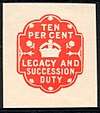Value-added taxation in India
VAT was introduced value added tax (VAT) into the Indian taxation system from 1 April 2005. The existing general sales tax laws were replaced with the Value Added Tax Act (2005) and associated VAT rules.
A few states (Gujarat, Tamil Nadu, Rajasthan, Madhya Pradesh, Chhattisgarh, Jharkhand, Uttarakhand and Uttar Pradesh) opted to stay out of VAT taxation system during the initial introduction of VAT but adopted it later.
As of 2 June 2014, VAT has been implemented in all the states and union territories of India except Pondicherry Andaman and Nicobar Islands and Lakshadweep Island.
History
The OECD (2008, 112–13) cites Chanchal Kumar Sharma (2005) to answer why it has proved so difficult to implement a federal VAT in India. The book claims that although the implementation of a broad-based federal VAT was considered as the most desirable consumption tax for India since the early 1990s, such a reform would involve serious problems for the finances of regional governments. Also, implementing VAT in India during the current economic reforms would have paradoxical dimensions for Indian federalism. On one hand, economic reforms have led to decentralization of expenditure responsibilities, which, in turn, demands more decentralization of revenue raising power if fiscal accountability is to be maintained. On the other hand, implementing the VAT, to make India a single integrated market, would lead to revenue losses for the states and reduce their autonomy indicating greater centralization[1]
Sharma asserts that "political compulsions have led the government to propose an imperfect model of VAT", as it 'goes against the basic premise of VAT', as it lacks both the removal of distortions in movement of goods across states and the uniformity in the tax structure. Chanchal Kumar Sharma (2005:929) states, "Local or state level taxes like octroi, entry tax, lease tax, workers contract tax, entertainment tax and luxury tax are not integrated into the new regime, which goes against the basic premise of VAT, which is to have uniformity in the tax structure. The fact that no tax credit will be allowed for inter-state trade seriously undermines the basic benefit of enforcing a VAT system, namely the removal of the distortions in movement of goods across the states."[2]
States where VAT is applicable
Gujarat
The Government of Gujarat had pass the "Gujarat Value Added Tax Act, 2003" (Act) in 2003 and specified that the date of implementation (appointed date) of the same would be notified later. Accordingly, the Government of Gujarat has vied notification no. GHN – 14/VAT-2006/S.1.(3)(1)-TH dated 29 March 2006 notified that the appointed date for implementation of VAT regulations in the State of Gujarat shall be effected from 1 April 2006.
However "The Central Sales Tax Act, 1956" (Central Act) which levies sales tax on inter-state sales is still effective and all inter state sale and purchase transactions effected after 1 April 2006 in the State of Gujarat shall continue to be subject to levy central sales tax as applicable earlier.
In Gujarat, "DVAT" Act 2003, will merge three existing state taxes:
Gujarat Sales Tax Act, 1956
Bombay Sales of Motor Spirit Taxation Act,1958
Gujarat Purchase Tax on Sugarcane Act,1989
[3]
Rates under VAT:
The Gujarat Value Added Tax Act, 2003 - Schedule
| Schedule No | Description |
|---|---|
| Schedule 1 | Goods, the sales or Purchase of which are exempt from tax |
| Schedule 2 | List of Goods Taxable at 5% and other rates as specified in the schedule |
| Schedule 3 | List of Goods Taxable at special rates |
| General Category | Goods not specified in any other schedule taxable @ 15% |
Maharashtra
The system of Value Added Tax (VAT) has been implemented, in the State of Maharashtra, w.e.f. 1 April 2005. Every dealer, who becomes liable to pay tax under the provisions of MVAT, shall apply electronically for registration, within 30 days from the date of such liability. VAT is implemented by Department of Sales Tax. Their site address is: Department Of Sales Tax - Govt. of Maharashtra
Rate of tax:
Schedule ‘A’ – Essential Commodities (Tax free) - Nil
Schedule ‘B’ – Gold, Silver, Precious Stones, Pearls etc. - 1.2%
Schedule ‘C' – Declared Goods and other specified verry goods - 6% (Rates for items other than declared goods changed to 6%)[4]
Schedule ‘D’ – Foreign Liquor, Country Liquor, Motor Spirits, etc. - 20% and above
Schedule ‘E’ – All other goods (not covered by A to D) - 13.5% with EFF CT from 17.09.2016
Delhi
DVAT 2004 as amended by DVAT 2005 and DVAT Rules 2005 came into force w.e.f. 1 April.,2005. It repealed Delhi Sales Tax Act 1975, Delhi Sales Tax on Works Contract Act, 1999, Delhi Sales Tax on Transfer to Right to use Goods Act 2002 and Delhi Tax on Entry of Motors Vehicles into Local Areas Act 1994.[5]
- Value-added tax depends on the product and services.
Jammu & Kashmir
Value added tax for the state Jammu & Kashmir includes multiple products such as cooked food, saffron, honey, electrical items, textile items such as durries, quilts, Pashmina wool etc. Apart from the applicability of VAT, the govt also made some exemptions on basic food items, industrial units, hotel, and farming equipment.
See also
- Assam General Sales Tax
- One Hundred and First Amendment of the Constitution of India
- Taxation in India
References
- Consumption Tax Trends 2008 VAT/GST and Excise Rates, Trends and Administration Issues: VAT/GST and Excise Rates, Trends and Administration Issues. OECD Publishing. 2008. p. 115. ISBN 9789264039476. Retrieved 5 July 2015.
- Sharma, Chanchal Kumar, 2005. "Implementing VAT in India: Implications for Federal Polity". Indian Journal of Political Science 66 (4): 915-934
- http://lemonconsulting.net/lc/legal/itax/form/gnvat.pdf
- "Change in rate of MVAT 5.5% to 6% w.e.f. 17th September 2016" (PDF).
- "Documents, Procedures & Formalities required for VAT Registration in Delhi". TopCAfirms. Retrieved 3 December 2013.
